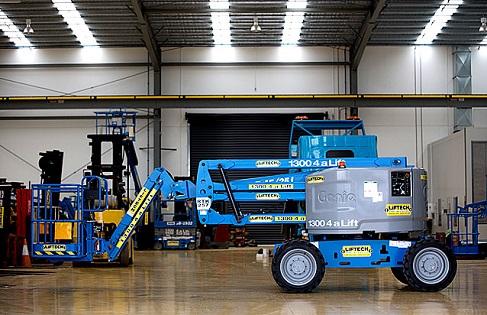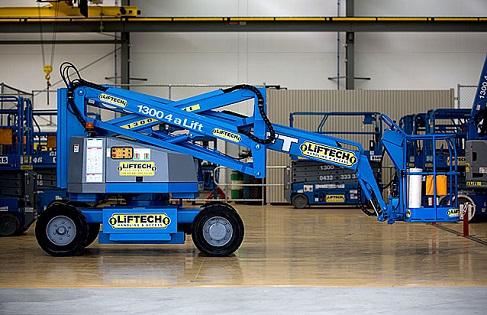Unfortunately, boom lift accidents occur every year – from electrocutions, falling from height, tip overs, collapses and being ejected from the bucket, the list goes on. The truth of the matter, however, is that most of these incidents are preventable. In many situations, simply employing some common sense is all you need to prevent incident – if it doesn’t seem right or safe, you probably shouldn’t do it. In saying that, some accidents are simply unavoidable.

We understand that it can be difficult to strike a balance between safe work practices and getting the job done on time. Many workers feel pressured to speed up their tasks in order to make their employers happy, but the truth is that employers aren’t going to be very happy when unsafe practices result in an accident or costly equipment damage. This is why it is always best to follow Occupational Health & Safety (OH&S) guidelines.
According to guidelines, boom lift training must include:
• Explanations of electrical, falling and falling object hazards;
• Procedures for dealing with hazards;
• How to recognise and avoid unsafe situations;
• Instructions for the correct operation of the lift, which should include documentation of the maximum intended load and load capacity;
• Demonstrations of the skills and knowledge needed to operate a lift;
• How and when to perform equipment inspections; and
• All of the manufacturer’s requirements.
Having properly trained workers is the best way to prevent accidents in the workplace, reduce the risk of fines from OH&S bodies, and prevent extensive damage to your equipment. The top accidents involving lifts cannot be prevented if workers don’t know the proper methods for operation, travelling, loading and stabilising them. This is why it is highly recommended that you look into a training program of some sort to ensure that this is covered.

To prevent boom lift accidents, it is important that you also keep the following factors in mind:
• Power lines – One of the most hazardous elements workers are likely to encounter, power lines are the source of many injuries and fatalities. You should consider all lines as being live, position yourself at least 10 feet away from all wires, and wear protective clothing.
• Harnessing – Fall protection is one of the top violations cited for these lifts. The best way to prevent falls is to not fall in the first place. Safety harnessing is a big part of fall protection – it connects the worker to the bucket, arresting their fall if they were to topple out.
• Maintenance – A malfunctioning or improperly cared for lift can result in an accident. Low oil, leaking fluid, low tire pressure and other maintenance related issues can all make the machine unsafe. Ensure that you keep up with your maintenance and inspection schedule.
• Maximum load capacity – Unstable loads and falling objects hitting workers are serious accidents. When a lift is carrying a load that exceeds its capacity and is larger than the size of the bucket, it can potentially cause objects to fall, as well as tip overs and collapses.

You will find that other OH&S resources will describe the best methods for safe lift operation. Whilst each of the above points are crucial for preventing boom lift accidents, prevention starts with one important thing – proper training. It is important that you ensure your workers have received adequate training and that it is kept up to date – with advancements in technology come new controls and other operation tips to master.
